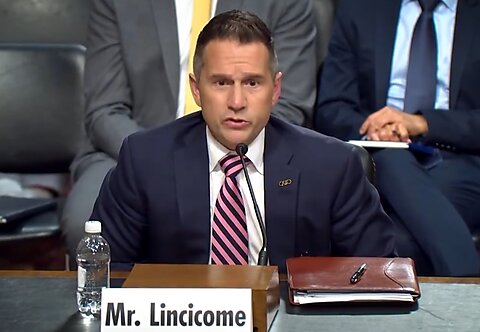
A Reality Check on US Industrial Policy and the Manufacturing “Boom”
On June 12, I testified before the Joint Economic Committee (along with Cato’s own Adam Michel) on the current state of US industrial policy and the manufacturing “boom” its supporters assert has already begun. Below is my oral statement to the committee, which summarizes my longer written testimony.
In both, I make the following points:
First, domestic investment in manufacturing and related construction indeed increased after the federal government enacted new US industrial policies—most notably, the CHIPS and Science Act, the Inflation Reduction Act (IRA), and the Infrastructure Investment and Jobs Act (IIJA)—but this spending requires the following context:
Before the IRA and the CHIPS Act became law, the pandemic, geopolitics, and other market‐based factors had already increased companies’ interest in diversifying semiconductor sourcing, and both private demand for and investment in green energy was soaring. As Figure 1 shows, moreover, a large share of major US semiconductor and electric vehicle (EV) investment announcements trumpeted by the White House came months or even years before these laws were enacted. It’s thus unclear how much of these gains have been caused by, instead of being merely coincident with, new US industrial policy.
Furthermore, recent increases in industrial spending are still a small share of total private investment and economic output (GDP). The spending might still be important, but it’s not currently an economic game‐changer. In the meantime, Figure 2 below shows that the actual US manufacturing sector has stagnated since 2022, thanks to higher interest rates, continued materials inflation, worker availability, economic uncertainty, tariffs and trade disputes, onerous regulations, and other headwinds. Private surveys, meanwhile, have been pessimistic, and 2024 investment projections are softening.
Maybe a “boom” eventually arrives, but it’s just as likely—if not more so—that we’re again seeing what critics of targeted tax credits, subsidies, tariffs, and other industrial policy measures have long cautioned: they don’t generate broad‐based gains and sustainable, long‐term growth, but instead re‐distribute existing resources to favored companies at a net loss to the US economy.
Second, we must consider the actual return on these investments. When the government showers preferred companies with trade restrictions and trillions of taxpayer dollars, the policies will inevitably produce something. The real question is what, exactly, all that government support is getting us. Today it’s too early to say, but there are already warning signs here and abroad—ones we’ve seen before.
At home, for example:
The costs of building, staffing, and starting production within subsidized facilities have increased substantially—thanks in large part to industrial policies colliding with longstanding supply‐side constraints, many of which have been caused or exacerbated by US policies like the National Environmental Policy Act (NEPA) and other permitting regulations; restrictions on legal immigration; and US trade restrictions.
Higher costs, changing market conditions, and other unforeseen issues have caused many semiconductor, EV, battery, solar, and other projects to be delayed or canceled outright, even where some construction had already begun.
There are already troubling signs that at least some US factories under construction might not produce innovative technologies that can compete in the global marketplace without endless government help. For example, even with subsidies and tariffs, US‐made solar panels cost more than those made in Southeast Asia, so the industry is now seeking even more tariffs. Meanwhile, several high‐profile semiconductor plants will not only be relatively small compared to ones in Asia, but also one or two generations behind the bleeding edge. Finally, President Biden’s recent EV tariffs were partly justified by US producers’ need to catch up to Chinese EV makers on both price and technology.
Finally, politics again appears to be undermining industrial policies’ implementation and raising subsidy recipients’ costs. Social policies have been attached to CHIPS Act funding; IRA subsidies and “place‐based policies” have disproportionately targeted swing states; EV consumer subsidies, charging stations, and other favored products have been bogged down in complicated bureaucracy; and investors worry about political uncertainty in the run‐up to this year’s presidential election.
These and other issues remind us that there’s a huge chasm between celebrated investment announcements and actual, productive factories. They also show the risk that today’s industrial policies produce small, “seen” benefits at a massive budgetary and “unseen” economic cost, including the diversion of finite taxpayer and private resources away from better targets.
Finally, there’s the dysfunction that US industrial policy is generating abroad. Subsidies here have prodded Japan, South Korea, Taiwan, the European Union, India, and other countries to offer subsidies of their own while encouraging China to double‐ or triple‐down on its industrial policy schemes. Since the CHIPS Act was passed, governments have offered more than $300 billion in grants, loans, tax credits, and other supports to keep or attract semiconductor investment (Figure 3). The IRA fomented a similar reaction abroad.
Overall, the IMF and Global Trade Alert, which tracks nations’ use of industrial policy and related measures, finds that there has been a dramatic increase in industrial policy measures in recent years—more than 2,500 last year alone—and that this wave was “primarily driven by advanced economies” with subsidies being “the most employed instrument.”
These uncoordinated and predictable “subsidy races” not only could offset or displace US investments, but also raise a serious risk of global overcapacity that would collapse prices and put US manufacturers in financial distress. (There are already signs that the global semiconductor, solar panel, EV, and battery markets are reaching a point of saturation or worse.) Should gluts materialize, domestic manufacturers in the US and other subsidizing countries could request government protection from foreign competition via “trade remedy” measures (i.e., antidumping or countervailing duties) or other import restrictions, which in turn set off retaliatory actions that inflict even more economic and geopolitical damage.
In the end, almost everyone—consumers, producers, investors, etc.—would be worse off. And in the case of “green” goods, so might the environment. Subsidy races and trade conflicts would also hurt poorer countries that can’t afford to subsidize production at a similar scale and depend on manufacturing and exports to move up the development ladder.
Overall, there are plenty of warning signs that US industrial policies’ ignominious history is repeating. This doesn’t mean, however, that Congress should sit back and simply hope that its trillion‐dollar gamble pays off. Instead, there are many market‐oriented reforms—to US trade, tax, immigration, regulatory, educational, and other policies—that Washington could pursue to boost US manufacturing and minimize problems associated with industrial policies. The list of such time‐tested reforms is long, but it still doesn’t include subsidies and protectionism.
You can read my full testimony here.



